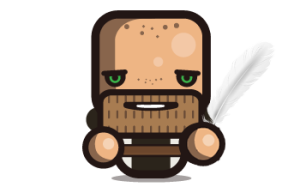FREE Shipping on Orders over $89 with Account – Create One Today!
- (844)-859-9400
- Get Help

When your child is diagnosed with a respiratory condition such as asthma or bronchitis, it can be an overwhelming experience.
One of the most effective treatments for these conditions is nebulization therapy. But what exactly does pediatric nebulization entail? And how do you choose the right equipment like child-friendly nebulizers and nebulizer masks for kids?
Understanding pediatric nebulization doesn’t have to be complicated. With the following sections, you’ll be well-equipped to navigate through your child’s respiratory health journey with confidence.
Pediatric nebulizers are specially designed devices that transform liquid medication into a mist, making it easier for children to inhale the medicine directly into their lungs. These machines are necessary for taking care of and treating breathing issues such as asthma or bronchitis.
Unlike adult versions, pediatric nebulizers are smaller and often come with fun designs and vibrant colors to appeal more to kids. They can be less intimidating this way.
The effectiveness of these little wonders isn’t just anecdotal; according to research published by the National Center for Biotechnology Information, pediatric nebulization therapy improves drug delivery efficiency compared with traditional inhalation methods. But remember: using them correctly is key.
Selecting a pediatric nebulizer isn’t as simple as picking out a toy for your child. It’s comparable to finding the perfect fit of footwear – it should be comfortable, fit snugly, and do its job properly.
The first step is understanding your child’s specific needs. Age plays a crucial role in this decision; smaller handheld nebulizers are often better suited for older kids who can hold them steadily, while a correctly fitting mask (with no need to hold the nebulizer cup) might work best for younger children.
The nebulizer cup itself can be the same used for adults, but the mouthpiece and mask need to be smaller for pediatric use. That’s the key difference when choosing the right pediatric nebulizer supplies.
You’ll also want to pay attention to how your child reacts to the machine. Sometimes the noise level of the machine itself can be scary, especially if they are hearing it for the first time. For this reason, it makes sense to run the machine without connecting it to the nebulizer cup and medication so they can get familiar with it and understand there’s nothing to be afraid of.
Pediatric nebulizers have evolved over the years. On top of having some child-friendly features, these nebulizers come with masks designed specifically for children’s smaller faces. These are often made from soft materials to ensure comfort during use.
Or you can buy the option that comes with a mouthpiece, as perhaps your child won’t prefer the mask. Then, you can add a pediatric mask to your order and try both.
Remember that you can customize these masks after receiving them by buying stickers to decorate the outside of the mask. The stickers could come off when you wash the nebulizer between uses, but that gives the child a chance to decorate with new stickers each time for a fun experience!
The correct use and care of pediatric nebulizers can make a big difference in your child’s respiratory health. It’s like taking care of a favorite toy; the better you maintain it, the longer it will last.
When it comes to using pediatric nebulizers, some parents might face challenges. Don’t be concerned; there are solutions to the issue.
Pediatric nebulizers are a game changer. They’re the relief your child’s hard-working lungs need when facing respiratory conditions.
Remember, there’s variety in these, and each has unique features that suit different age groups and needs.
Selecting the right pediatric nebulizer is crucial. Keep an eye out for kid-friendly features that make treatments less intimidating – but the key is to get the pediatric size for a great fit. Also, remember it makes sense to have both a mask and mouthpiece for first-timers, as your child could prefer one over the other.
Maintenance matters too! Proper use and care of your chosen device will ensure its effectiveness and longevity.
Challenges may arise, but don’t fret! Practical solutions are at hand to help navigate any hurdles you encounter on this journey toward easier breathing for your child.

Edited for content by ADAM PAGE.
